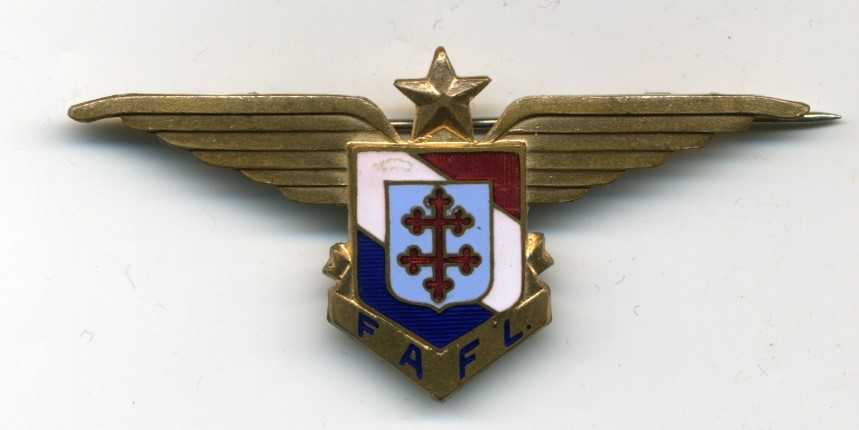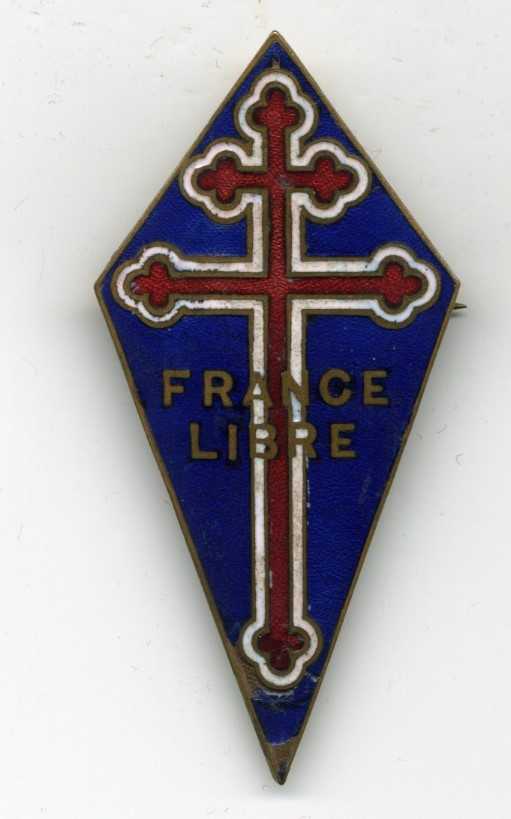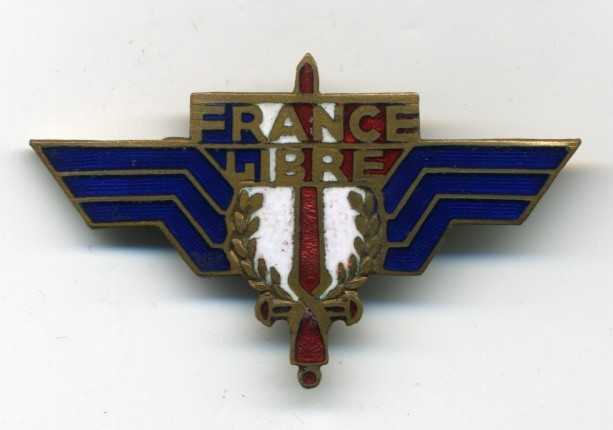Three Free France insignia
Maurice Bleicher collection
In late June 1940, whether or not they had heard General de Gaulle’s call to arms, the first “Free French” began arriving in London. Driven by the same rejection of defeat, these men and women intended to carry on the fight, feeling very strongly that it could not all be over with the crushing defeat of the Battle of France.
By organising these willing volunteers, de Gaulle hoped to keep France in the war. To make this a reality, a military force urgently needed re-establishing, a challenge which, in the second half of 1940, seemed almost impossible, given how disparate were the elements to have come forward, how scant the resources and how dependent the first troops were on their British ally for equipment. The Free French therefore needed to be given visibility: distinctive insignia that would prevent them from merging with the Allied troops and becoming simply a French legion fighting in British uniform.
All three insignia presented here were created in late 1940 and bear witness to this “Free French” identity, whose assertion also had strong political significance.
They are, from left to right:
The Free French Forces insignia
The Free French Forces (FFL) insignia appears to have been designed by Corporal Louvier in December 1940, at the FFL headquarters in London.
Depicting the combatant’s sword, the wings of victory and the laurel wreath of the conqueror, and inscribed with the words “Free France”, the insignia was first made in Britain.
The one shown here belonged to Jean Vernier. Chief medical officer at Bangi Hospital, Vernier spearheaded Ubangi-Shari’s move to side with Free France in August 1940. A veteran of the Eritrean and Syrian campaigns of 1941, he fought in Libya and Egypt (El Alamein) in 1942, then in Tunisia and Italy in 1943 and 1944. On 15 August 1944, he landed in Provence, at the head of a Franco-British surgical team attached to the African Commandos, setting up and running a front-line treatment unit. He subsequently took part in the liberation of Alsace, in January 1945, when he was awarded his colonel’s stripes. He was made a Compagnon de la Libération by decree of 7 March 1945..
The Free French Naval Forces insignia
The decision to create a distinctive flag for the FNFL, to be flown on the bowsprit of every vessel, dates from July 1940.
On the 27th, General Order No 8 established a chest badge for the FNFL. Once the design was made, the badge was produced in Britain. It consists of a red bottony Cross of Lorraine edged in white on a blue kite-shaped ground, and bears the words “Free France”.
This example belonged to Boris Rabinovitch. A lieutenant in the reserve, Rabinovitch was mobilised on 3 September 1939 and assigned to the 2nd Bomber Brigade, based at Avord. He learned of the armistice when he was sent on a mission to Morocco. Arriving in Casablanca and determined to go on fighting, he deserted on 30 June 1940, making it to Gibraltar and arriving in Britain on 23 July, where he enlisted in the Free French Air Force on the 25th. In 1942, he applied for a transfer to the Free French Naval Forces
In 1943, he was sent to the United States to train as a seaplane pilot. After qualifying with the rank of squadron leader, he was appointed head of the French navy flying school at the Pensacola air base (Florida), in January 1944. Promoted to lieutenant, he returned to France in January 1945 to take part in the liberation of the Atlantic pockets. He was assigned to the 3rd Dive-Bombing Squadron and led his unit on eight dive-bombing raids on German positions strongly protected by anti-aircraft defences.
He was made a Knight of the Légion d’Honneur and received a citation.
The Free French Air Force insignia
The FAFL insignia was designed in autumn 1940 by Private Drabier, a former student of the École des Beaux-Arts in Paris. Comprising a star above spread wings, a shield in the colours of the French flag with a Cross of Lorraine, and the inscription “FAFL”, it was first struck in Britain.
This one belonged to Jean Ruamps. Born in 1906, Ruamps was an NCO pilot who joined Free France in Douala (Cameroon), in August 1940. He was assigned to Air Battalion No 1 in November, and took part in the Gabon campaign. In June 1941, he was transferred to the air force detachment in Chad, then in January 1942 to Cameroon. In January 1943, he joined the Groupe Artois “Béthune” escadrille, then in May the “Arras” escadrille. He ended the war with the 3/15 Transport Group.
He was awarded the Médaille de la Résistance by decree of 14 June 1946.




